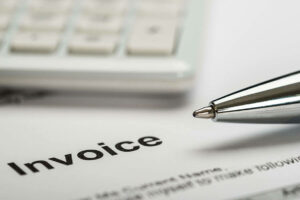
Understanding and accurately calculating salvage value is essential for effective asset management, ensuring compliance with accounting standards, and optimizing financial performance. To appropriately depreciate these assets, the company would depreciate the net of the cost and salvage value over the useful life of the assets. If the assets have a useful life of seven years, the company would depreciate the assets by $30,000 each year. Both declining balance and DDB require a company to set an initial salvage value to determine the depreciable amount.
Double-Declining Balance Method

Yes, salvage value can be considered the selling price that a company can expect to receive for an asset at the end of its life. Therefore, the salvage value is simply the financial proceeds a company may expect to receive for an asset https://www.bookstime.com/ when it’s disposed of, though it may not factor in selling or disposal costs. This method requires an estimate for the total units an asset will produce over its useful life. Depreciation expense is then calculated per year based on the number of units produced.
MACRS Half-Year Convention
- With the mid-quarter convention, you take 1½ months of depreciation in the quarter the property is placed in service and 1½ months of depreciation in the quarter the property is taken out of service.
- The insurance company decided that it would be most cost-beneficial to pay just under what would be the salvage value of the car instead of fixing it outright.
- The final two MACRS components I’ll cover before turning to calculating depreciation are property classes and recovery periods.
- This method assumes that the asset’s value decreases at a constant rate over time.
To illustrate the concept, the first five payments are displayed in the table below. The salvage value is used to determine annual depreciation in the accounting records, and the salvage value is used to calculate depreciation expense on the tax return. The formula to calculate the annual depreciation is the remaining book value of the fixed asset recorded on the balance sheet divided by the useful life assumption. The depreciation https://x.com/BooksTimeInc expense reduces the carrying value of a fixed asset (PP&E) recorded on a company’s balance sheet based on its useful life and salvage value assumption. Most businesses opt for the straight-line method, which recognizes a uniform depreciation expense over the asset’s useful life.
What Is Salvage Value vs. Book Value?
Suppose a company spent $1 million purchasing machinery and tools, which are expected to be useful for five years and then be sold for $200k. The impact of the salvage (residual) value assumption on the annual depreciation of the asset is as follows. The useful life assumption estimates the number of years an asset is expected to remain productive and generate revenue. Scrap value might be when a company breaks something down into its basic parts, like taking apart an old company car to sell the metal. Based on all this information, you determine that Table A-1 (below) is the proper MACRS depreciation table to use for the office furniture. Since furniture is personal property (as opposed to real property), and it wasn’t placed in service during the last quarter of the year, the half-year convention must be used.

The depreciable amount is like the total loss of value after all the loss has been recorded. With the straight-line depreciation method, a property’s cost recovery is spread out evenly over its useful life. Straight-line depreciation also factors in a piece of property’s salvage value, which is the estimated amount an owner would receive when selling the property at the end of its useful life.

Salvage Value Calculator
- This helps businesses determine the net amount they can expect to receive from selling an asset after accounting for any additional costs involved in the sale.
- For your first year of ownership, you also claimed a $8,000 tax deduction for the removal of barriers to the disabled and the elderly.
- A company can also use salvage value to anticipate cash flow and expected future proceeds.
- In accounting, residual value refers to the remaining value of an asset after it has been fully depreciated.
This calculation helps in evaluating the net benefit of disposing of an asset versus keeping it in operation. Furthermore, salvage value also aids in strategic decision-making related to the potential sale of depreciated assets for parts. When an asset has reached the end of its useful life, it may still have value in its individual components or as scrap. Companies can sell these parts or scrap to recover some of the asset’s value, thus reducing the overall cost of ownership. The majority of companies assume the residual value of an asset at the end of its useful life is zero, which maximizes the depreciation expense (and tax benefits). This method estimates depreciation based on the number of units an asset produces.

However, it can be complex to calculate, relies on estimates, and may lead to frequent adjustments due how to calculate after tax salvage value to market fluctuations. This helps businesses determine the net amount they can expect to receive from selling an asset after accounting for any additional costs involved in the sale. Therefore, any time you incur a cost or receive a benefit on a particular project, you have a cash flow. Salvage value is a critical concept in accounting and financial planning, representing the estimated residual value of an asset at the end of its useful life. Recognizing their differences sharpens financial insights and promotes astute asset management. Market value estimation is a lot more dynamic and market-driven approach to determining the salvage value.
